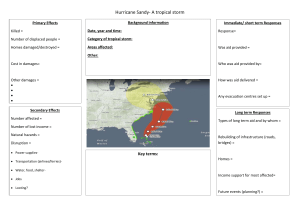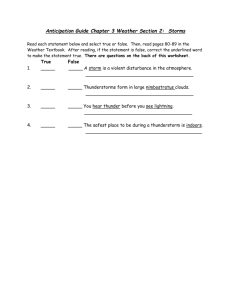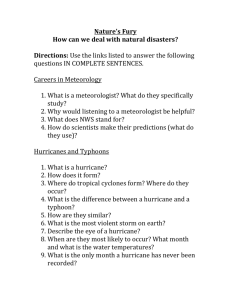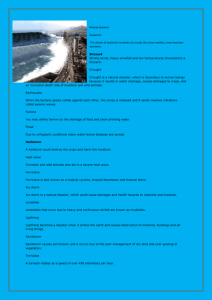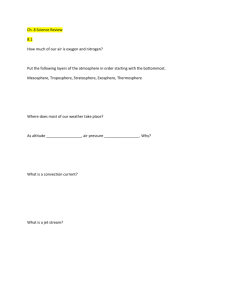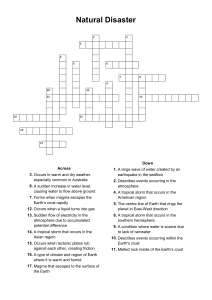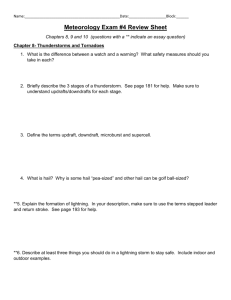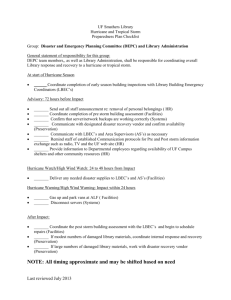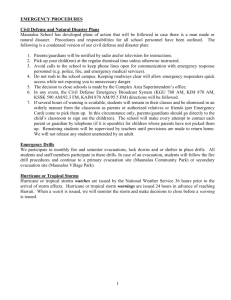Weather and Climate Information PPT - Brockley-4
advertisement
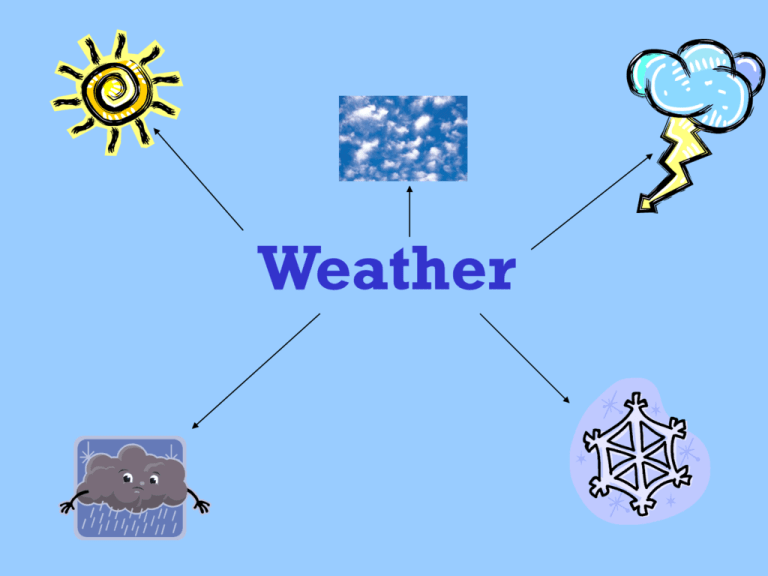
Weather Meteorologist – a person who studies weather What is weather? Weather is the study of conditions of the atmosphere are over a short period of time Atmosphere conditions Elements of weather: Temperature Precipitation (rainfall, snowfall) Wind speed Humidity Cloud cover Understanding surface chart symbols and the systems they show Low pressure area Common weather symbols High pressure area Warm front Cold front Occluded front Stationary front Trough Weather Fronts Front When two air masses meet they don’t like to mix so they form a border called a front. What is a warm front? What is a cold front? A cold front is the transition zone where a cold air mass is replacing a warmer air mass. Weather: Under Pressure •High and Low Pressure Systems •A blue "H" means a center of high pressure (usually calm, sunny weather). •A red "L" means low pressure (which can mean storminess). Most fronts extend from low-pressure centers. Pressure: High and Low Pressure 1.Air has weight (yes it is true) **All the air molecules in the atmosphere put pressure on our bodies. **The higher you go the less pressure Types of weather maps used everyday by Meteorologists Front Map Wind Map Temperature Map Precipitation Map Radar Map Satellite Map Questions 1.Why is it helpful to use different types of weather maps? 2.Where does weather happen? Climate Climate climate is the pattern of seasonal weather that happens year after year Climate Around the World… polar, tropical, temperate, cool, dry Compare these two types of climate- make predictions and conclusions about the water cycle in these areas. • Tennessee • Arizona Information on hurricanes A storm goes through a series of stages before being classified as a hurricane. Tropical Disturbance Thunderstorms with light cyclonic circulation Tropical Depression Wind speeds between 20 and 34 knots (23-39 mi/hr) Tropical Storm Wind speeds between 35 and 64 knots (40-73 mi/hr) Hurricane Wind speed greater than 64 knots (74 mi/hr) Hurricane Katrina Photographs Things to look for: 1. Types of clouds 2. New dangerous conditions forming besides the hurricane 3. Look at the colors, shapes and height of the storm Resources http://school.discovery.com/lesso nplans/programs/weathermaps/ www.usatoday.com http://ww2010.atmos.uiuc.edu/(Gh )/home.rxml
